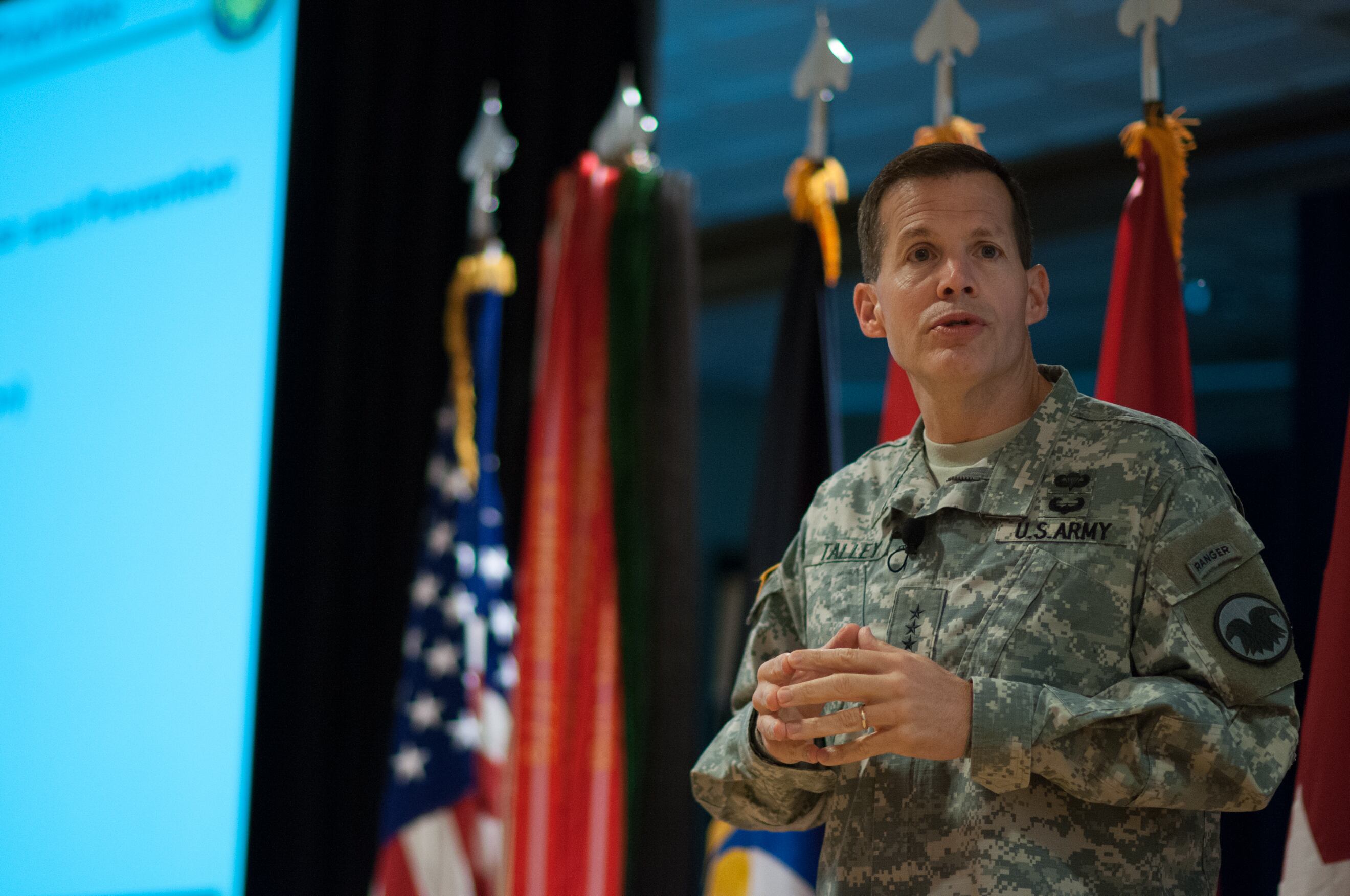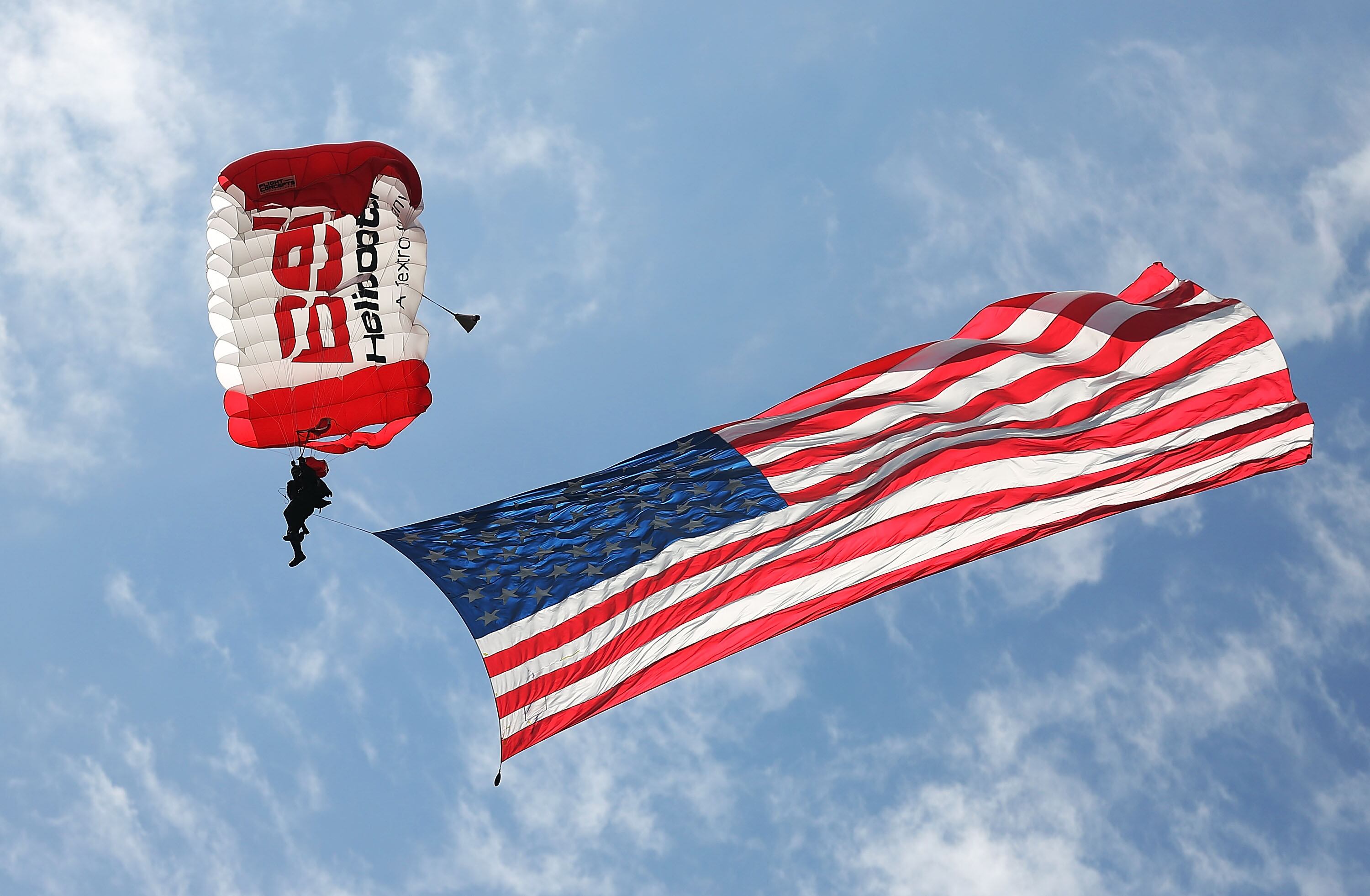The Army Reserve is falling behind in readiness and equipment modernization in the face of steep budget cuts, the component's top officer told Army Times.
"The Army Reserve has never failed to have a unit ready before the date it was needed to execute a mission," said Lt. Gen. Jeffrey Talley, chief of the Reserve and commanding general of Army Reserve Command. "But the sausage-making to get it done gets uglier and uglier and more complicated than ever before."
If he didn't have the command authority to move resources and personnel around to meet mission requirements, "there's no way I could have generated readiness," Talley said.
"You've heard the phrase 'just-in-time logistics,' " he said. "You don't want just-in-time readiness. What you want to do is generate readiness at the right time for the mission."
Whether in face-to-face or town hall meetings with soldiers or in unit status reports, Talley said he's seeing readiness drop across the Reserve.
"We're having to do a lot more breaking of units," Talley said, referring to a practice called cross leveling that pulls soldiers from one unit to fill open spots in another.
"If you go back to [Operation Iraqi Freedom] I and OIF II, we were breaking three units to fix one," he said. "We're headed back in that direction, and that is the worst way to generate readiness. It's not efficient, and you don't maintain unit integrity."
As it gets "harder for us to find a way to make mission," the Reserve ends up "putting more and more on the plates of our junior leaders at the company level," Talley said.

Lt. Gen. Jeffrey Talley, chief of the Army Reserve and commanding general of Army Reserve Command, said despite strong retention numbers, he's concerned degraded readiness and other issues could lead to talented reservists leaving service.
Photo Credit: Timothy Hale/Army
The demand for Army Reserve soldiers continues to go up, Talley said.
About 18,350 Reserve soldiers are currently mobilized overseas or on orders in the U.S.nited States. The Army Reserve has soldiers in every Army service component command and combatant command around the world, Talley said.
"But my readiness is slowing and degrading," he said, resulting in "a snowball effect."
"Most soldiers in the Army Reserve have deployed, and most of them joined since 9/11," he said. "They joined to do something. If you're trying to struggle to do something and you don't have the dollars, what happens? They leave."
The Reserve’s attrition is relatively low – at about 12 percent, compared with 24 percent when Talley took command three years ago – and he said he is worried about keeping good soldiers if the force doesn’t stay engaged and busy.
"This was the first year we really got hit hard through the budget," Talley said about 2015. "This year is going to be pretty tough, too."
Talley said he also is concerned about maintaining modernized equipment.
Before 9/11, the Army used to spend almost 6 percent of its budget on Reserve modernization and equipping; that is now down to about 2 percent, Talley said.
"When we look at the Army Reserve, our ability to exercise mission command with the Army and others is very limited because 75 percent of all the mission command systems, hardware and software, are not compatible," he said. "We've got to be able to talk to each other, and we can't because of our equipping and modernization funding."
The Army is working to fix that discrepancy, Talley said, but the service's budget woes are "not only affecting readiness, they're hurting interoperability."
As a whole, the Reserve is doing relatively well in terms of end-strength and force structure cuts compared with the active Army and Army National Guard, who also are struggling with budget cuts, force structure changes and expanding mission requirements, Talley said.
The Reserve ended fiscal 2015 with about 198,700 soldiers; the component will drop to 198,000 by the end of fiscal 2016.
"The good news for the Army Reserve is that we can do it without any negative impact to people, for the most part," Talley said.

And in terms of force structure, the Army Reserve is home to much of the Army's critical combat support and combat service support specialties.
"When you look at our reduced budgets, we're probably faring as well, if not better, than the other two components," Talley said. "Part of that is because of who we are."
The Reserve is stocked with much of the Army's "technical enabling capability," such as doctors, nurses, logisticians, lawyers, and civil affairs, Talley said. This is why it is critical for the Reserve to remain an operational force, he said.
"The problem is we are becoming strategic, not because of end-strength reductions or force structure changes, but because of a cash flow problem," Talley said.
Talley estimates at least a third of the Army Reserve must remain operational in order to meet the Army's missions at home and abroad.
These troops need training and support to remain ready, Talley said.
"We can't wave a wand and say, 'Now you're operational,' " he said.
As the Army works through its shrinking budget, senior leaders are "trying to get flexibility any way they can," Talley said.
"It's not always just a reduction in money, it's a reduction in the flexibility of the type of money," he said. "That's one of the concerns with sequestration. It's not so much the reduction of the funding, although that's problematic, but it's the salami-slicing of the budget and the lack of flexibility from where the services can cut."
As an example, the Army Reserve finished fiscal year 2015, which ended Sept. 30, with unused overseas contingency operations money, Talley said.
"We spent everything else … but we couldn't quite spend all of the OCO money that was allocated," he said. "I can't take OCO money and use it to generate readiness to the left of mobilization, and I can't re-mission the money."
Despite the challenges, Talley said he doesn't want soldiers and tactical leaders to worry about issues like the budget.
"What do I want them to focus on? Leadership," he said. "We have no clue what the future is. Just look at all the shenanigans and activities that are going on around the world. We are going to have a more uncertain world at home and abroad, and the way you deal with it, if you do nothing else, is to invest in leader development."
Soldiers and leaders should focus on education, training and personal readiness, Talley said.
"We want to have modern equipment, we want to have proper resourcing," he said. "But at the end of the day, what keeps people in organizations is knowing that their leaders care about them, and knowing that their leaders empower them, and they're going to have to do good, old-fashioned training."
The Army Reserve must get "back to the basics, back to basic readiness," he said.
"I think if we do that, which is us scraping stuff off [junior leaders'] plates and giving them time to be with their soldiers, I think we can mitigate some of the concerns we have with attrition or decreasing readiness," he said.
Michelle Tan is the editor of Army Times and Air Force Times. She has covered the military for Military Times since 2005, and has embedded with U.S. troops in Iraq, Afghanistan, Kuwait, Haiti, Gabon and the Horn of Africa.




